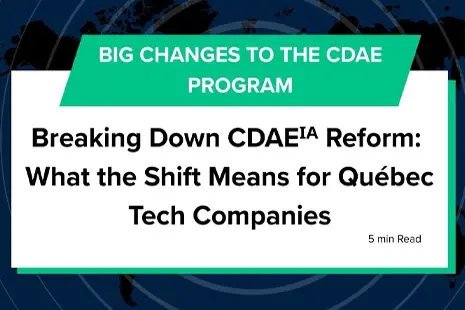There are more than 7.1 million highly-skilled tech talent workers in the United States and Canada, according to recent research from CBRE, with tech hubs in North America having some of the highest concentrations of high-tech degree holders and job openings on Earth.
But the dynamics of the tech industry have evolved significantly over the past three years. Not only have remote work and remote learning both leveled the playing field for access to tech talent, but they’ve de-emphasized the role that geography plays in understanding the health of the tech sector at large.
To that end, pandemic-era hiring (and firing) trends have created a greater pool of tech talent than ever before. As a result, there’s a demand for technological skill sets in sectors that have historically been considered tech-light.
This goes to drive home the point that in 2023, every company is basically a tech company.
These are just a few of the conditions that led to the 2023 Scoring Tech Talent ranking of North American tech hubs. This annual ranking grades the top 50 population centers in the US and Canada where tech talent live, learn and work based on criteria relative to job creation and innovation.
While these markets are graded on 13 unique metrics to gauge each one’s “depth, vitality and attractiveness” to both tech employers and potential talent, there have been key changes to the ranking this year in direct response to the post-pandemic paradigm shift. Specifically, ‘Labor Costs’ were weighed more heavily this year than ‘Rent’ as companies have begun allocating more capital toward labor than real estate.
Small and large markets see tech talent demand surge
Markets considered “gateways,” for instance, have seen a major boom in both available talent and job openings. This comes both as major tech employers embrace remote work and decamp from expensive tech hubs, while entrepreneurs in more affordable locales take advantage of favorable market conditions to create startups.
The cherry on top of all of this is the emergence of new tech roles in virtually every industry, which has broadened the opportunities to work in tech across every major market.
Between 2017 and 2022, for instance, Calgary saw a 61 percent jump in tech talent growth, while Waterloo (52 percent) and Edmonton (45 percent) saw similar increases, despite not having a previous reputation for being centers for innovation.
Major markets enjoyed a lift over the 5-year period too, as San Francisco remained the top market for tech talent, adding roughly 75,020 tech jobs within the Bay Area.
While the success of San Francisco is probably no surprise, the strength of Canadian markets shouldn’t go unnoticed: Toronto (63,800) and Montreal (51,500) were the second and third biggest growth cities for tech talent during the 2017-2022 stretch.
The top five markets in CBRE’s ranking remained the same from last year’s report, though New York City moved up to the number 3 spot while Toronto dropped to number 5. But when you zoom out into the larger ranking with a focus on more recent trends—namely, corporate layoffs over the past 12 months—healthy tech markets are far more distributed across North America than they had been in years past.
The top 10 (and their respective grades) are:
- San Francisco/Bay Area (82.6)
- Seattle (71.4)
- New York City Metro (67.4)
- Washington D.C. (66.7)
- Toronto (66.5)
- Austin (66./4)
- Boston (63.3)
- Vancouver (60.6)
- Dallas/Ft. Worth (60.5)
- Denver (58.5)
Tech talent and opportunities spread more evenly across North America
At the number 11 and 12 spot in the ranking are Ottawa (57.8) and Montreal (57.7), and with their accelerated rate of hiring and attracting talent compared to peer cities, it’s safe to assume that at least one of these markets will be cracking the top 10 within the next few years.
This is especially true when you consider the growing tech ecosystems within each of these communities—to say nothing of the government support and non-dilutive funding available for tech-based startups in Canada.
As we at Boast learned firsthand these past few months, startup activity has never been greater in Canada, as events like Collision and even FounderFuel Demo Day—the biggest Canadian demo showcase on the annual calendar—were back in full force this year.
This is also demonstrated in a renewed push in VC funding in key Canadian markets. Investments in Toronto’s tech startup sector topped $1 billion in Q2, jumping more than 733 percent from Q1, for instance, while the BC tech ecosystem enjoyed a sure of 573 percent ($639.6 million invested) over the same period.
That said, many of these VC deals were focused on later-stage investments, showing that VC funding is still relatively tight as we head into the fall.
Fortunately, early-stage startups (and really any innovative founder) can tap into significant non-dilutive government funding to extend their runway as they launch a new product or service.
At Boast AI, we make the process of capturing non-dilutive capital easy, offering customers an R&D platform of intelligence that maximizes their access to funding while optimizing their R&D workflows.
To learn more about Boast, schedule a call today—and to understand more about the funding programs available to startups across North America, subscribe to our blog.


